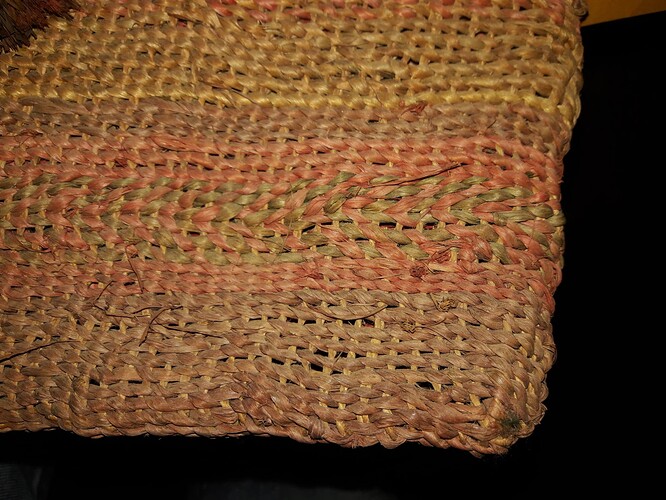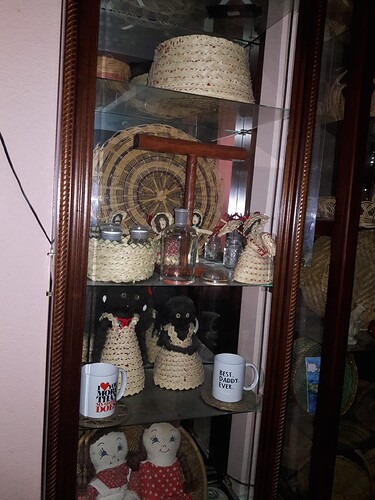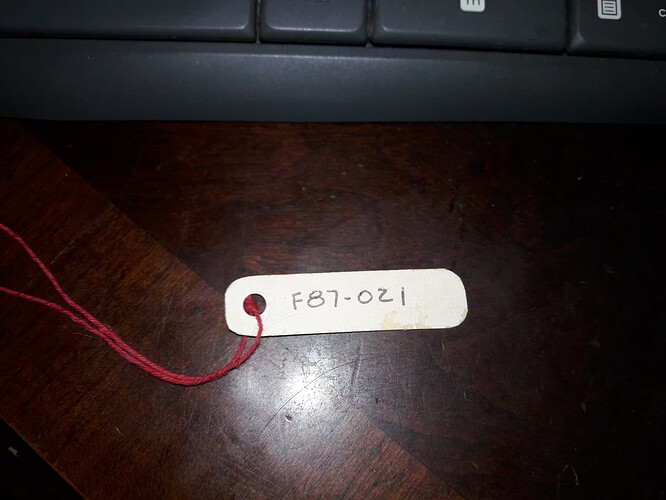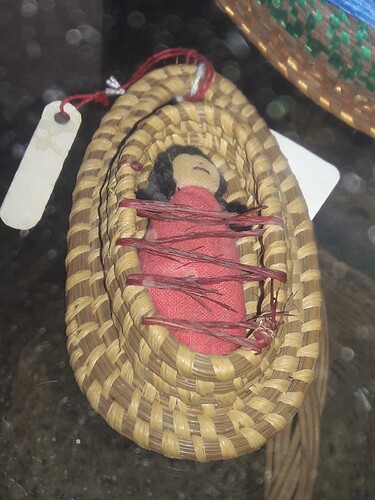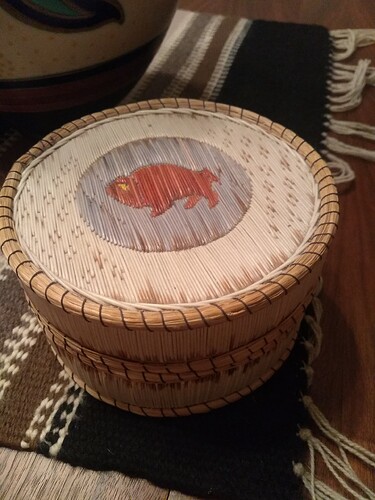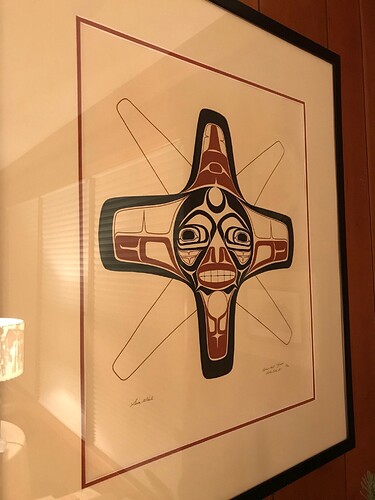I’m not sure what it’s made of. Some sort of natural fiber it looks like to me, keeping in mind that I know nothing about it at all. I tried to get some closer pictures.
Nez Perce cornhusk bag?
So a quick Google search didn’t help me find anything that looked like this. I know the Eiteljorg Western Art Museum in Indianapolis has a really good collection of items from the Great Lakes tribes, among others. I’m wondering if it would be helpful to give them a call? The Smithsonian probably has a lot of info too, but the Eiteljorg is smaller and it might be easier to reach someone.
A lot of the bags I saw on a quick search were made out of hemp or other grasses. One thing that was interesting was that the Miami Indians sometimes wove Bison hair into their bags and baskets.
Also seems like a good guess on your part that it’s probably Southeastern if it came with a bunch of other things that were.
Is it fairly soft? My porcupine quill baskets have sweet grass wrapped around the top and the bottom and it kind of looks like that. But it’s not very soft.
For me, it’s been an object from the Eastern Woodlands, known as mocotaugan in the Algonquin language but commonly referred to as the " Crooked Knife". I have been collecting them since I was a kid.
You’ve been collecting those specific bags? Can you post a pic? 
Boy that is a hard one. At first glance I thought your bag might be a Nettle fibre bag from the Great Lakes, but a quick search didn’t reveal anything quite similar. One thing jumps out is the faded colors. Usually a good sign that earlier non-aniline pigments were used. Books like " Sacred Circle " , The Spirit Sings " , The Art of the Florida Seminole and Miccosuke" are really comprehensive studies of material culture.
What’s the tag say, if anything? To me it looks like a likely imported vintage women’s shoulder bag, with that long strap and tassel closures, rather than an ethnographic NA thing. (It’s totally possible to be unrelated to the rest of the stash.) Bags more or less like this have been popular for decades, certainly since the 1960s, from Madagascar and other such places. It will be interesting to hear if you learn more.
Of course, if you can determine the fiber you can easily rule in or out US origins of the material.
No it’s fairly hard and stiff. It seems like maybe it got wet and dried crooked or something. I’m leery of handling it to much, for fear of breaking the fibers. I’m wondering if it’s raffia.
There are a number of Seminole baskets and dolls. Thanks for the references.
This is from another piece. The F is for fiber, 87 is the year it was purchased and the last number indicates that it was the 21st item purchased in 1987. At one time there were notebooks with information on the items but it seems they were inadvertently thrown away during the cleaning out of the house by some of the family. I’ll have to try to find the picture of all the baskets piled haphazardly in the corner of a bedroom.
Impressive tag. Anybody that would take the time to inventory their collection like that must have been quite serious. You would assume that this is regional to the rest of the collection, because as you said earlier this was their collecting category. Good luck with the research!
I meant to write above that it looks like raffia to me, which got me thinking Madagascar (though elsewhere also possible–but not US).
–
About purchases of collections or groups: every object deserves separate scrutiny for its quality and origin. Things show up together that may have been an original mistake in curating, or a later addition by a relative who inherited it, etc.
I forgot about this one so I missed posting it on Christmas by a few days. Louisiana Coushatta basketry. I’m sure he’s not supposed to be the baby Jesus, but he worked in a pinch one year. When, with a house full of grandchildren, the baby Jesus mysteriously disappeared from the nativity scene. Lol
@chicfarmer From everything I have read while studying my baskets, they have been using dyed raffia in the southeast to bind these long pine needles into baskets like this since the late 40’s/early 50’s. Here’s one with a dyed raffia flower on the lid.
Interesting, thank you!
I have some arrowheads, Navajo rugs, beaded jewelry, dolls, clothing, sand painted items and other things.
If I liked it (and could afford it) I would usually purchase.
Most of the arrowheads were found by my G-Grandpa in the 1800’s.
That’s interesting that it’s raffia and pine needles. This is one of my porcupine quill baskets that my parents bought in Ontario. It has sweet grass as the wrapping around the edges; it looks like (in the pic) what I’m assuming are the pine needles on your basket.
For those who aren’t familiar with them, they are made from birch bark, porcupine quills, and sweet grass.
@Ziacat, That’s an amazing quill basket. Are those quills that trim the outer edge of the top, just inside the sweetgrass that are made to look like twisted rope?
Thank you. Yes, you are right, those are also quills. I like it that most of them are left in their natural color, and I love bison. My other one is smaller, and some of the quills are popping loose, so I need to find out how to fix it. My mom had another beautiful one which she passed on to my niece. She bought them all in Ontario about an hour or two east of Sault Ste Marie, pretty close to Manitoulin Island; I believe these are Ojibwe.
North Coast art for me - Haida, Kwakwa̱ka̱ʼwakw, Heiltsuk and Inuit mostly. My family has a number of different pieces, ranging from paintings to jewelry - so beautiful ~
(sorry about the sideways pic - lots of lamp glare on the glass)
Beautiful piece! Any NW Coast masks or totems?
That’s a fascinating picture! We’ve got several small prints from first nations people’s (not sure which groups, prob have it somewhere) on Vancouver Island. I also bought a pretty little copper pendant there which is either a whale tail or a raven depending on how you turn it.
Do you live in that area (Pacific Northwest)?
